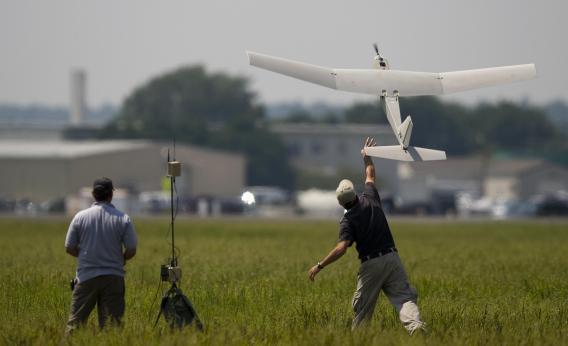Author Robert Fulghum allegedly once wrote, “It will be a great day when our schools get all the money they need and the Air Force has to hold a bake sale to buy a bomber.” (It was either him or the bumper of a Honda Civic.) Well, I don’t know about the education budget or the going rate for gingersnaps, but I can tell you that the armed forces are indeed cutting back. As evidence, their newest weapon to combat drug smuggling in the Caribbean is a balloon on a really long string.
OK, the balloon is actually the Aerostar TIF-25K—a helium-filled surveillance device equipped with cameras and sensors. The Aerostar can fly at altitudes of up to 2,000 feet and is tethered to a Navy ship below. Though it’s a rather frill-less technology that’s been around for decades, the blimp boosts each ship’s radar range to 50 miles from five miles. It can even ID vessels up to 15 miles away. Once the Aerostar detects something fishy, the Navy can then launch an unmanned aircraft system named Puma AE to get a closer look.
The Puma is no Predator. Its wingspan is just 9 feet, and it’s launched by hand, but it too is packed with goodies like electro-optical and infrared cameras. The basic premise is that the combination of the Aerostar and the Puma will allow the Navy to gather intelligence about potential drug smugglers without leaving the ship. This is a huge boon as every time we send boarding crews out on false alarms we’re wasting time and resources that could be spent on the real bad guys.
According to the Associated Press, nobody’s saying exactly what the Aerostar/Puma tag team costs or how much it will save the American taxpayers, just that “each can be run at a fraction of the cost of the fixed-wing planes or helicopters usually dispatched to check out suspected smugglers.” These nonspecifics were given last week when the Navy invited select media aboard the High Speed Vessel Swift for a demonstration. (The AP notes that on its first landing attempt, the Puma missed the 321-foot deck and plopped into the ocean, which must have been sort of awkward. At least it’s waterproof.)
Old-fashioned as it might sound, blimps aren’t out of place in today’s military. Before taking on anti-smuggling duty, both Aerostar and Puma did tours in Iraq and Afghanistan. And in 2010, the Army commissioned three “Long Endurance Multi-Intelligence Vehicles.” (Don’t even get us started about the sperm-shaped blimps flying over Nevada last year.)
As the Navy forced to reduce patrols in Latin America, such low-cost/high-reward technologies seem like a good way to maintain effectiveness on the high seas. And maybe if the Navy proves they can save their money and take care of these little blimps and hand-held drones, we’ll all chip in and get them the autonomous UFOs they really want.
